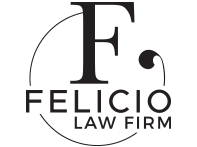
At Felicio Law Firm, we understand the inherent complexities and potential pitfalls involved with co-owning property with another. While purchasing with someone such as an intimate partner, friend, relative or business partner can bring financial advantages and increase borrowing power; it must be approached carefully and with legal support to achieve lasting benefits.
The Importance of Choosing the Right Ownership Structure
One of the most critical decisions to make when buying property with someone else is the ownership structure. In New South Wales, co-owners have two primary options: joint tenants or tenants in common. This choice will have significant and far-reaching implications for estate planning, taxation, and the ability to dispose of one’s share in the property.
Joint Tenants: Under a joint tenancy arrangement, each co-owner holds an equal and undivided interest in the property. This means that no individual co-owner can claim a specific portion of the property as their own. The most notable characteristic of joint tenancy is the right of survivorship – if one owner passes away, their interest automatically passes to the surviving co-owner(s), regardless of any provisions in their will or estate plan. This type of ownership is often chosen by couples or family members who wish to ensure that the property remains within the family in the event of one owner’s death.
Tenants in Common: In contrast, as tenants in common, each co-owner holds a distinct and separate share in the property. These shares can be equal or unequal, depending on the agreement between the parties. For instance, if two co-owners contribute different amounts toward the purchase price, their ownership shares can reflect their respective contributions. Upon the death of one co-owner, their share in the property does not automatically pass to the surviving co-owners but rather becomes part of their estate, allowing them to bequeath their share to chosen beneficiaries through a will or trust.
The choice between joint tenancy and tenancy in common should not be taken lightly, as it will have significant implications for estate planning, taxation, and the ability to dispose of one’s share in the property. It is essential to carefully consider factors such as the nature of the relationship between co-owners, estate planning goals, and potential future scenarios before making this decision.
Drafting a Comprehensive Co-ownership Agreement
Regardless of the ownership structure chosen, it is essential to have a legally binding co-ownership agreement in place. This document serves as a contract between the co-owners, outlining their respective rights, responsibilities, and obligations, and can help prevent disputes and provide clarity on various issues that may arise during the co-ownership period.
A well-drafted co-ownership agreement should address the following key aspects:
- Contribution to expenses: Clearly defining how expenses such as mortgage payments, property taxes, insurance, maintenance costs, and utilities will be shared among co-owners. This can be based on their respective ownership percentages or an agreed-upon arrangement.
- Use and occupancy: Establishing guidelines for the use and occupancy of the property, including any restrictions or limitations on areas that can be accessed or modified by each co-owner.
- Decision-making processes: Outlining the procedures for making major decisions regarding the property, such as renovations, refinancing, or the potential sale of the property. This may involve establishing voting rights, majority requirements, or other decision-making mechanisms.
- Dispute resolution: Providing a framework for resolving disputes among co-owners in a fair and efficient manner. This may involve mediation, arbitration, or other alternative dispute resolution methods.
- Exit strategies: Establishing provisions for situations where one co-owner wishes to sell their share or buy out the other(s), as well as procedures for the potential sale of the entire property. This may include rights of first refusal, valuation methods, and timelines for completing the transaction.
- Management and maintenance: Outlining responsibilities for the day-to-day management and maintenance of the property, including delegating tasks and determining how costs will be shared.
- Insurance and liability: Addressing insurance requirements, such as property and liability coverage, and specifying how premiums and deductibles will be shared among co-owners.
Navigating Financing and Mortgage Considerations
When purchasing property with someone else, it is crucial to carefully consider the financing arrangements. Co-owners may choose to jointly apply for a mortgage or have separate financing arrangements, each with its own implications and potential challenges.
Joint Mortgage Application: If applying for a joint mortgage, lenders will typically assess the combined income, credit history, and financial obligations of all co-owners. It is important to understand that each co-owner will be jointly and severally liable for the entire loan amount, meaning that the lender can pursue any or all co-owners for the full outstanding balance in the event of default.
This arrangement can be advantageous for co-owners who may not qualify for a sufficient mortgage individually, as their combined income and assets will be considered. However, it also means that the financial decisions and creditworthiness of one co-owner can impact the others, potentially creating friction or complications down the line.
Separate Financing Arrangements: Alternatively, co-owners may opt for separate financing arrangements, where each party is solely responsible for their portion of the mortgage and associated costs. This approach can provide greater independence and flexibility, as each co-owner is solely accountable for their own financial obligations.
However, separate financing arrangements may also involve additional legal complexities, such as determining how ownership percentages align with mortgage contributions and establishing mechanisms for addressing situations where one co-owner defaults on their portion of the mortgage.
Regardless of the financing approach chosen, it is advisable to seek professional guidance from mortgage brokers, lenders, and legal experts to ensure a clear understanding of the financial obligations, risks, and potential implications involved. At Felicio Law Firm, we work closely with a network of trusted financial professionals to provide our clients with comprehensive guidance and support throughout the property co-ownership process.
Tax Implications and Estate Planning Considerations
Co-ownership of property can have significant tax implications, particularly when it comes to capital gains tax, rental income (if applicable), and deductions for expenses. It is essential to seek professional tax advice to understand the tax implications specific to your situation and to ensure compliance with relevant laws and regulations.
For example, if the co-owned property is an investment property that generates rental income, the co-owners will need to determine how that income will be reported and taxed. Additionally, when it comes time to sell the property, there may be capital gains tax implications that need to be addressed.
Estate planning is another crucial consideration when co-owning property. Co-owners should have a valid will in place to ensure their share in the property is distributed according to their wishes upon their passing. Additionally, co-owners may want to consider other estate planning strategies, such as setting up trusts or establishing power of attorney arrangements, to protect their interests and those of their beneficiaries.
Relationship Changes and Exit Strategies
Relationships and circumstances may change over time, and co-owners should have plans in place should any unanticipated events arise. A co-ownership agreement should address provisions for either co-owner to sell his/her share to or purchase out another co-owner(s), as well as procedures pertaining to selling all or part of a property if irreconcilable differences or significant life events (ie divorce/bankruptcy etc) require it (such as irreconcilable differences / sale process for total property sales etc).
Divorce or separation in co-ownership situations can be particularly complex due to legal and financial entanglements that become complicated as legal battles ensue over valuation, buyout or sale procedures and mechanisms for dealing with outstanding mortgage obligations or division of equity issues. When faced with this circumstance, an effective co-ownership agreement should provide clear procedures for valuation, buyout or sale procedures as well as mechanisms for dealing with outstanding obligations or dividing equity among co-owners.
When one co-owner faces bankruptcy or significant financial strain, their co-ownership agreement should provide guidance as to how best protect the interests of all other co-owners and ensure continued viability of property ownership arrangements.
Arguably the key component of any co-ownership agreement, having clear exit strategies outlined will help avoid conflicts and ensure an orderly dissolution process.
First Home Buyer Benefits and Eligibility
In New South Wales, first home buyers may be eligible for various grants and stamp duty concessions when purchasing a property. When buying a property with someone else, it is important to understand the eligibility criteria and ensure that all co-owners meet the necessary requirements.
For example, if you and your partner are both first home buyers, you may be eligible for a combined First Home Owner Grant and a stamp duty concession on the purchase price, provided that both parties meet the eligibility criteria set by the NSW Government. These criteria typically include factors such as income thresholds, residency requirements, and the value of the property being purchased.
However, if one of the co-owners has previously owned a property, it may impact the eligibility for these benefits. In such cases, it is essential to seek professional advice to determine whether any exemptions or partial benefits may still be available.
The Importance of Professional Guidance
Purchase of property jointly in New South Wales can be an enormously complex and financial endeavor, which necessitates professional guidance to protect both parties involved throughout. At Felicio Law Firm we understand these complexities well and strive to offer comprehensive legal support for our clients throughout this journey.
Our experienced lawyers will collaborate closely with you to understand your individual circumstances, goals, and risks before providing tailored legal guidance throughout every aspect of the process – from structuring ownership arrangements and co-ownership agreements, tax implications and estate planning considerations, as well as potential exit strategies.
As every co-ownership situation is distinct, our approach to co-ownership arrangements varies accordingly. Our legal professionals collaborate closely with trusted financial advisors, accountants and other specialists in order to make sure that every aspect of co-ownership arrangements are considered and addressed properly.
At our firm, we take great pride in maintaining an atmosphere of open communication and transparency with all clients, keeping them up-to-date at every turn and ensuring they fully comprehend any legal or financial implications related to decisions they are making.
Purchase of property with another can be an intensive and daunting endeavor; with legal assistance and support from Felicio Law Firm’s partnership, however, this journey will become both manageable and fruitful. Our firm serves as your reliable ally who strives to safeguard your interests while maximizing investment returns.
Conclusion
Acquiring property with someone else in New South Wales requires thoughtful deliberation and expert legal guidance. At Felicio Law Firm, we understand the complexities and potential pitfalls involved with co-ownership arrangements and are dedicated to providing our clients with comprehensive legal advice and support.













